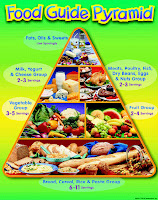 Diabetes is a metabolic disorder of the body in breaking down carbohydrates, which is characterized by a lack of increase in blood sugar and insulin levels as well as a lack of insulin in the body. Blood sugar level is the concentration of sugar in the blood, the calculations are per milligram per deciliter (70 mg -110 mg/dlt is the normal size). Insulin is working to set the balance in the blood sugar levels every time, though, especially after meal blood sugar tends to change.
Diabetes is a metabolic disorder of the body in breaking down carbohydrates, which is characterized by a lack of increase in blood sugar and insulin levels as well as a lack of insulin in the body. Blood sugar level is the concentration of sugar in the blood, the calculations are per milligram per deciliter (70 mg -110 mg/dlt is the normal size). Insulin is working to set the balance in the blood sugar levels every time, though, especially after meal blood sugar tends to change.People with diabetes, the mechanism of insulin is not fully functional, and the result is increasing blood sugar which are not controlled, and when it reaches 600 mg/dlt, it would be very dangerous if not treated medically.
Types of Diabetes
There are three types of Diabetes:
1. Type I (occurring in childhood)
2. Type II (occurring in adults)
3. Gestational Diabetes (Diabetes during pregnancy / due to pregnancy that can be lost after the pregnancy was over).
The division above is only for easy explanation, in fact many adults affected by Diabetes Type I and many children are obese and inactive are affected by Diabetes Type II.
Diabetes Treatment
The main difference between Diabetes Type I and Type II diabetes are on insulin levels in the body. In Type I Diabetes patients produce only a little insulin or none at sekalli, so it must inject insulin for life along with a strict diet. While on Type II Diabetes, insulin is produced by the body but the insulin is not working as it should. Type II diabetes is sometimes can be controlled only with weight loss, diet, and exercise as appropriate.
Treatment of diabetes which mainly is to get the handling of medical professionals. The second is to recognize the type of diabetes that affects the body and identify themselves in detail, by finding all the necessary information. Perform regular blood sugar tests, adhere to special diets for people with diabetes, taking medications as prescribed by a doctor, and do not miss the sport, and do not underestimate this disease.
Diabetes Diet
Basically, people with diabetes without complications from other diseases, can consume all kinds of food, provided that the total calories / food intake in a day does not exceed the amount required.
The main difference is the amount of food, when serving food like burgers / steak normal range is between 8-12 oz per serving, people with diabetes to consume only 3 oz. Sugar and fruit or juice or desserts / snacks can still be consumed in limited amounts. Foods containing fat and high cholesterol are also avoided, and the consumption of carbohydrates and sugar process also avoided. It is advisable to eat a lot of whole food, (whole grains, whole wheat, brown rice, mashed rice, sorghum, bulgur, oats and the like) and fresh vegetables / organic.
It is recommended to consume a varied diet with a comparison between limited carbohydrate and sugar, meat or protein is very low fat / no fat, low-fat meats, fresh fruits, skim milk fat.
Learn also about Glycemix Index (GI). GI food lists with the latest content already published. Also need to master about how to count carbs. The selection of food with carbohydrate content and low GI will greatly assist the body's metabolism in maintaining the stability of blood sugar in the body.
Sodium intake must also be kept tight, avoid using canned foods or processed foods (corned beef, instant noodles, salted fish, bacon, egg, salt, sardines, shredded, etc.) which high sodium levels (> 400 mg). For sauce, look for soy sauce with low sodium levels.
source:
johannesharry
Read More ..








